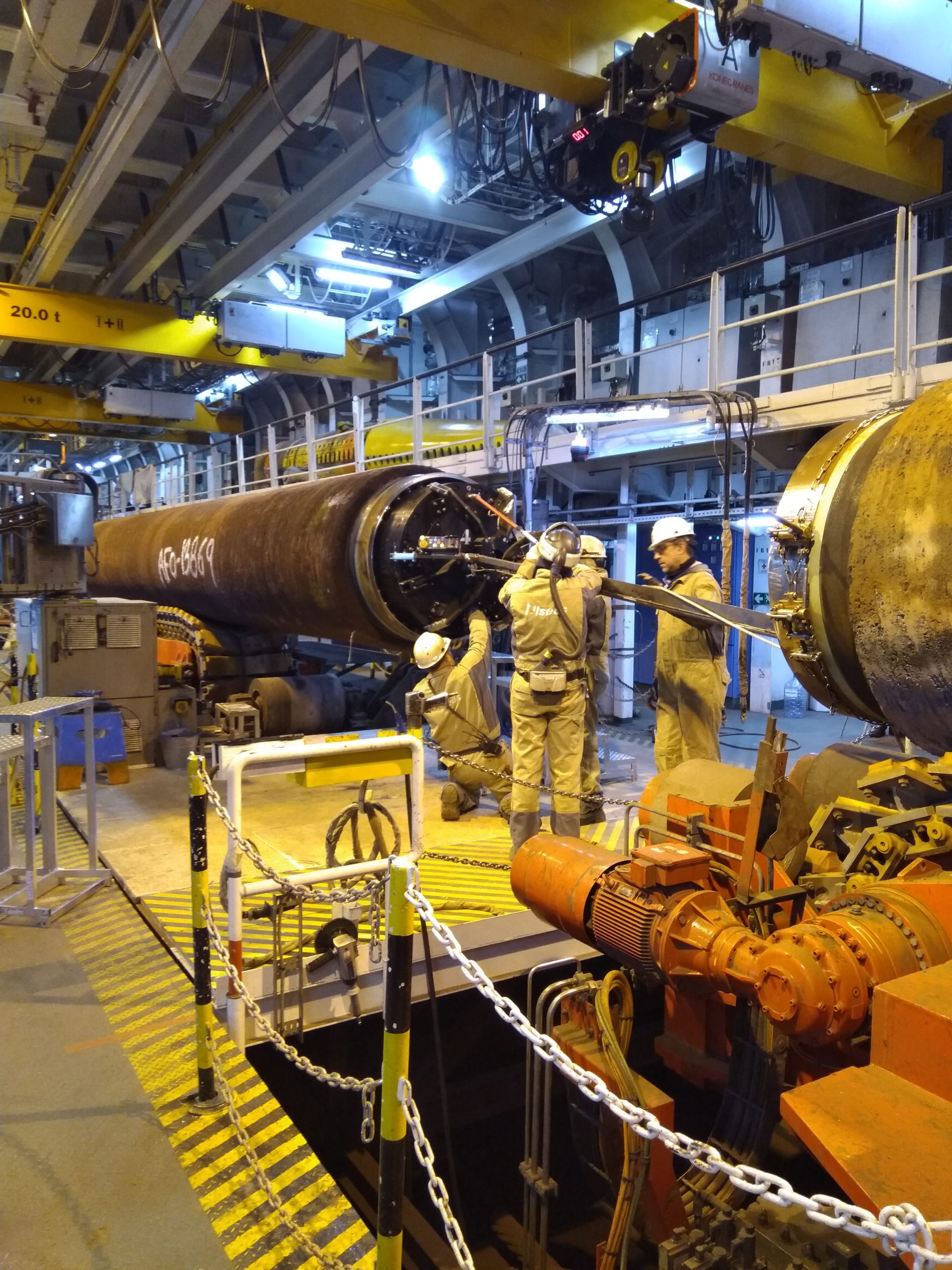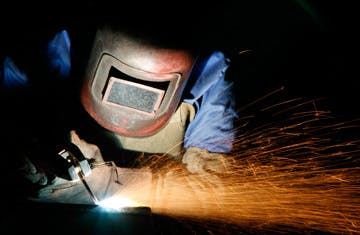Advanced Strategies in Pipeline Welding Assessment: Innovations and Technologies for Boosted Accuracy and Integrity in Weld Assessment
The landscape of pipe welding evaluation is undertaking a significant makeover, driven by sophisticated strategies that promise to boost both precision and reliability in weld evaluations. Technologies such as automated examination systems and advanced imaging technologies are redefining standard practices, while non-destructive testing techniques ensure material stability is preserved. As these technologies evolve, they not just boost problem detection prices yet also enable a lot more reliable upkeep strategies. However, the ramifications of these improvements extend past prompt advantages, increasing crucial concerns regarding future methods and criteria in the sector.

Relevance of Weld Inspection
Making sure the stability of pipe welds is crucial to the general safety and security and integrity of industrial systems. Rigorous inspection of welds is integral to the lifecycle of pipe infrastructure.
The significance of weld examination extends past plain conformity with regulative requirements. It functions as a positive step to identify and rectify imperfections, such as insufficient blend, porosity, or splits, before they escalate right into significant concerns. Efficient evaluation techniques also contribute to the long life of pipelines, decreasing upkeep costs and boosting operational efficiency.
Furthermore, thorough weld examinations foster trust fund amongst stakeholders, including regulatory bodies, capitalists, and the areas offered by these pipes. By guaranteeing that all welds fulfill the needed requirements, organizations can mitigate threats and promote their track records. In recap, weld inspection is essential not only for operational honesty however likewise for the more comprehensive ramifications it holds for safety and security and environmental stewardship.
Automated Assessment Systems
The assimilation of automatic evaluation systems in pipeline welding has transformed the approach to making sure weld top quality and honesty. These systems employ advanced robotics and expert system to perform evaluations that are not just faster however also more regular than traditional methods. Automated systems can cover comprehensive sizes of pipelines effectively, recording data that human assessors could overlook due to exhaustion or ecological conditions.
One of the essential benefits of computerized evaluation systems is their capability to run in dangerous atmospheres, minimizing the threat to human examiners. They utilize numerous non-destructive testing (NDT) techniques, such as ultrasonic testing and magnetic particle evaluation, to examine weld stability without endangering the structure. The data accumulated is refined in real-time, permitting for prompt feedback and timely restorative actions when defects are identified.
In addition, automated systems facilitate the standardization of inspection processes, guaranteeing that each weld is examined versus constant requirements. This not only improves the reliability of results yet also streamlines conformity with governing criteria. As sectors continue to prioritize safety and security and operational performance, the duty of automatic evaluation systems in pipe welding will undoubtedly increase, leading the way for a lot more innovative high quality assurance methods.
Advanced Imaging Technologies
Often employed in modern-day pipeline welding assessments, advanced imaging technologies have dramatically boosted the capability to identify and assess weld flaws. Techniques such as electronic radiography, calculated tomography, and thermographic imaging supply inspectors with high-resolution pictures that reveal sub-surface flaws and architectural inconsistencies that might be unseen to the nude eye.
This leads to quicker visit their website assessments and improved accuracy in determining critical problems. Calculated tomography, on the other hand, supplies three-dimensional imaging, allowing assessors to imagine complicated geometries and evaluate the integrity of welds from multiple angles.
Thermographic imaging uses infrared technology to detect variations in temperature level, identifying locations of possible weak point or tension within the weld. These advanced imaging innovations not only improve defect detection rates yet also decrease the moment and sources needed for pipeline inspections. Therefore, they play an essential function in maintaining pipe safety and integrity, ensuring conformity with sector requirements while minimizing operational threats.
Non-Destructive Testing Techniques
Utilizing different techniques, non-destructive screening (NDT) approaches are essential in pipe welding examinations, permitting for the evaluation of weld integrity without jeopardizing the product's structural integrity. NDT encompasses a variety of approaches, including ultrasonic testing (UT), radiographic screening (RT), magnetic particle testing (MT), and color penetrant testing (PT) Each technique has distinctive benefits and applications relying on the details demands of the inspection.
Ultrasonic screening uses high-frequency acoustic waves to identify internal defects, offering exact measurements of weld density and integrity. Pipeline Welding Inspection. Radiographic testing utilizes X-rays or gamma rays to produce pictures of the weld, revealing inner problems that might not be noticeable on the surface. Magnetic bit testing works for finding surface area and near-surface suspensions in ferromagnetic products, while color penetrant screening highlights surface splits by utilizing a colored dye
Integrating these NDT approaches right into pipeline welding inspections improves the precision and integrity of weld analyses, ensuring that possible failures are identified visit the site early. As industries demand greater requirements for safety and performance, the role of NDT in maintaining the integrity of welded structures remains to be critical in pipeline building and construction and maintenance.

Future Fads in Weld Evaluation
As we look to the future of weld assessment, innovations in modern technology are poised to change the techniques utilized for assessing pipeline honesty. The combination of artificial intelligence (AI) and equipment knowing in assessment procedures is expected to boost the accuracy of problem discovery and predictive maintenance. These innovations enable real-time information analysis, making it possible for inspectors to determine possible problems prior to they escalate right into substantial troubles.
In addition, making use of drones equipped with sophisticated imaging systems is gaining traction. These airborne evaluations can cover vast areas promptly, capturing high-resolution pictures and information that can be examined for issues in hard-to-reach areas. This not just boosts safety but also increases performance in the assessment procedure.
Moreover, the development of clever sensors installed in pipe systems provides the potential for constant surveillance. These sensing units can identify changes in pressure, temperature level, and vibrations, providing valuable insights right into the wellness of the welds with time.

Final Thought
In final thought, the assimilation of sophisticated techniques in pipe welding inspection considerably boosts the accuracy and integrity of weld assessments. Developments such as automated examination systems, progressed imaging modern technologies, and non-destructive screening methods play a critical duty in enhancing issue discovery rates and fostering positive upkeep techniques. As these modern technologies continue to progress, they will even more ensure the safety and security and performance of pipeline systems, eventually contributing to the stability of important framework.
